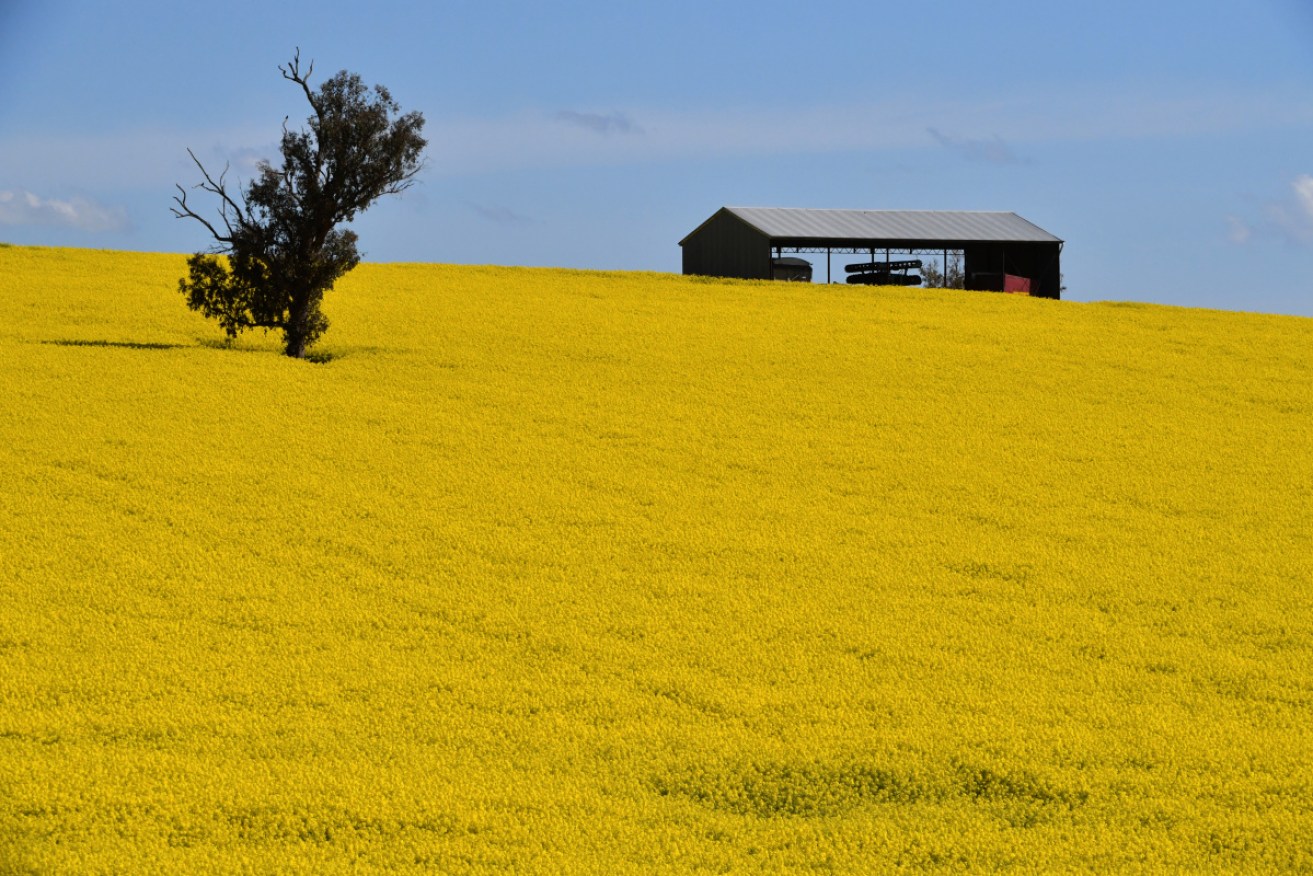Bumper winter crops herald return of another mice plague

Canola production is tipped to drop 41 per cent but will come in above the 10-year average. Photo: AAP
Australia faces another mouse plague, with winter crops set for a bumper harvest.
Plenty of rain at the right time and a record amount of land sown means another strong year for growers, the federal government’s agriculture forecaster said on Tuesday.
The latest Australian Bureau of Agricultural and Resource Economics and Sciences crop report tips a national winter crop harvest of 54.8 million tonnes, which is two per cent lower than last year but almost one-third up on usual levels.
Canola has spurred another “wonder winter crop”, with a record-breaking five million tonnes expected, an increase of 11 per cent, ABARES chief Jared Greenville says.
“Another good year, however, provides the opportunity for the high mouse numbers of last year to return, and we are already seeing a high prevalence of mice in some cropping regions,” he said.
Mouse numbers are highest in southern Queensland and northern and central New South Wales.
There are also high populations in central Queensland and around Geraldton in Western Australia.
Mice are expected to increase production costs as producers will need to clean rodent debris from harvested crops.
The large increase in mice populations expected in spring is especially concerning in parts of NSW where on-farm storage is usually greater than in other states, the report says.
Downstream supply chain participants are building new storage capacity to minimise this risk, and are streamlining screening processes to detect contamination.
The area sown to winter crops this year is a record 23.2 million hectares.
Canola is up by almost a quarter at just over three million hectares, boosted by producers cashing in on world prices and excellent planting conditions in Western Australia and NSW.
Chickpea production is another winner in 2021-22, tipped to increase by 15 per cent to 844,000 tonnes.
Production of barley is forecast to fall by five per cent to 12.5 million tonnes, as China’s tariffs restrict trade.
Wheat production is forecast to fall by five per cent to 32.6 million tonnes.
Rainfall was lower in August but there were ample reserves of soil moisture to sustain crops.
“Spring rainfall is set to be above average in the eastern states and South Australia – just what is needed to finish the winter crop off,” Dr Greenville said.
“Mouse numbers are unlikely to significantly lower national production.”
Crops in most parts of WA are expected to achieve significantly above-average yields, even if spring rainfall disappoints.
-AAP








